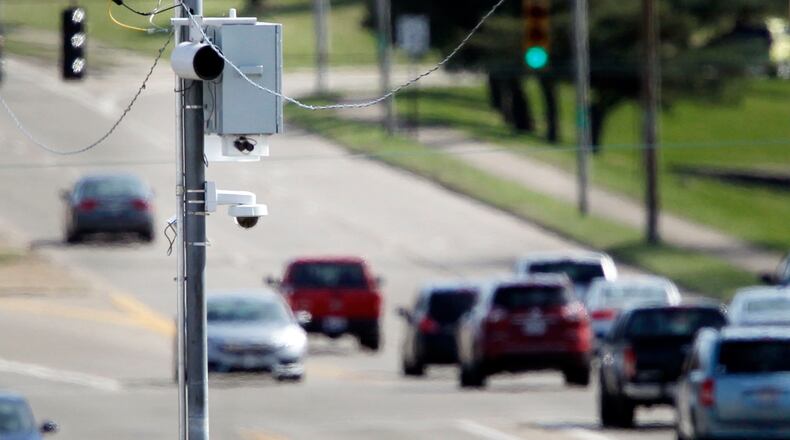After years of increases, auto crashes dropped in 2018, which Dayton leaders say underscores the need for automated traffic cameras at a time when the state is trying to get rid of them.
MORE: Showdown between Dayton, state shaping up over traffic cameras
The state just passed a law that financially penalizes cities that use the devices. The city says it plans to sue, claiming the law violates home rule protections like a former Ohio law the city successfully challenged.
“It’s unfortunate that the Ohio Supreme Court has ruled on this, the state Legislature didn’t like their answer, so they decided they’d just pass it anyway even though they know it’s likely to be overturned by the Supreme Court again,” said Dayton Mayor Nan Whaley.
Last year, the city recorded 1,246 injury crashes and 3,136 property-damage crashes, according to Dayton Police Department data.
Injury crashes were down more than 13 percent, which was the first decrease since 2014 and the largest drop since at least 2001, police data show.
Property damage crashes decreased more than 2 percent, which was the first decline since 2013. There were 20 fatal crashes last year, which was up from 17 in 2017.
Dayton originally began installing red light cameras in 2003. Eight years later, the city installed fixed speed cameras.
Both types of cameras are controversial. Supporters say they improve safety, while critics call them a cash grab that cities use to fill government coffers.
After issuing tens of thousands of citations and collecting millions in fines, the city of Dayton shut down its cameras in mid-2015 after the state imposed new restrictions on the devices, requiring police officers to be present during their operation.
After the cameras were unplugged, accidents and collisions soared, rising by 40 percent between 2014 and 2016, data show.
MORE: State goes after red-light, speed cameras; Dayton Mayor Whaley not happy
“It was clear that camera traffic enforcement was curtailing unsafe driving behavior — making our city safer for vehicular and pedestrian traffic,” said Dayton police Chief Richard Biehl.
The city’s photo enforcement program was restarted in late 2017 after the Ohio Supreme Court struck down a portion of the state law that required a police officer be present when cameras are in use.
Last year, the city collected about $1.9 million from its photo enforcement program and issued about 58,125 citations for speeding and red light violations caught on camera.
Cameras are a useful tool for getting people to obey traffic laws and drive more safely at a time when there’s a growing problem with distracted driving, as people use their cell phones and mobile devices behind the wheel, Biehl said.
Traffic cameras are a far safer way to cite motorists than having police officers chase vehicles down and pull them over, and they ensure people don’t get points on their licenses when cited for violations, Biehl said.
The city has installed fixed 10 red light and speed-detection cameras at five locations that officials say were selected after an analysis of crash data identified problem intersections.
UPDATE: Here’s where Dayton has moved its mobile speed cameras
Three red light cameras were installed at West Third Street and James H. McGee Boulevard, which had 77 crashes between 2014 and 2016, according to data from the Miami Valley Regional Planning Commission.
No intersection in the city had more crashes during that time period.
Two speed cameras were installed on South Keowee between East Third and East Fourth streets.
Between 2014 and 2016, the intersections of Keowee and Third streets Keowee and Fifth streets combined had 80 crashes.
Fixed cameras were placed at other high-crash intersections, and police also use mobile speed trailers and handheld speed guns on roadways across the city.
Some state lawmakers and critics say cities like Dayton primarily use traffic cameras to generate revenue — not improve safety.
State lawmakers passed the new law, which Gov. Mike DeWine signed, that essentially takes the same amount of state funding away from cities that they generate in revenue from fines from automated red light and speed-detection cameras.
The city of Dayton plans to fight the new state law on the grounds that it violates home rule, said Mayor Whaley.
The city is using technology to change unsafe driving behavior, which is a wise use of resources and frees up officers for other public safety needs, she said.
“We think this is unconstitutional by the Ohio Constitution,” she said. “We will be suing: You’ll be hearing from us on the process of how we go through that.”
Whaley said the city’s law department is in communication with other Ohio cities across the state that use cameras likely to join forces to challenge the new law.
About the Author

